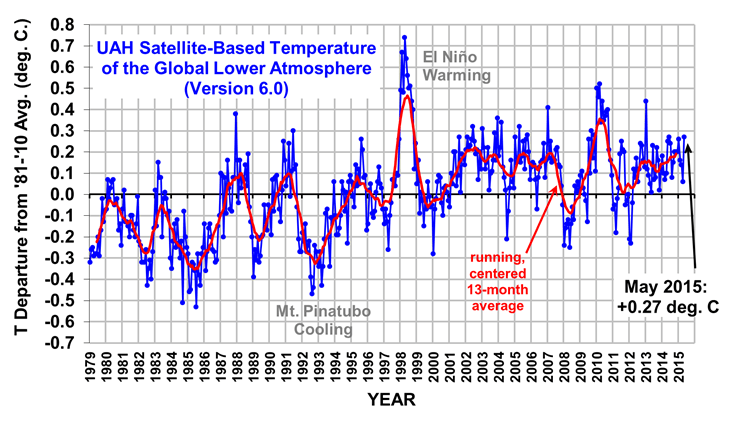NOTE: This is the second monthly update with our new Version 6.0 dataset. Differences versus the old Version 5.6 dataset are discussed here.
The Version 6.0 global average lower tropospheric temperature (LT) anomaly for May, 2015 is +0.27 deg. C, up considerably from the April, 2015 value of +0.06 deg. C (click for full size version):

The global, hemispheric, and tropical LT anomalies from the 30-year (1981-2010) average for the last 5 months are:
YR MO GLOBE NH SH TROPICS
2015 1 +0.26 +0.38 +0.14 +0.12
2015 2 +0.16 +0.26 +0.05 -0.07
2015 3 +0.14 +0.23 +0.05 +0.02
2015 4 +0.06 +0.15 -0.02 +0.07
2015 5 +0.27 +0.33 +0.21 +0.27
I suspect that the May warming is due to El Nino-related warmth in the Pacific.
The global image for May, 2015 should be available in the next several days here.
The new Version 6 files, which should be updated soon, are located here:
Lower Troposphere: http://vortex.nsstc.uah.edu/data/msu/v6.0beta/tlt
Mid-Troposphere: http://vortex.nsstc.uah.edu/data/msu/v6.0beta/tmt
Tropopause: http://vortex.nsstc.uah.edu/data/msu/v6.0beta/ttp
Lower Stratosphere: http://vortex.nsstc.uah.edu/data/msu/v6.0beta/tls

 Home/Blog
Home/Blog



